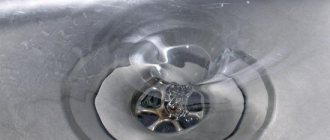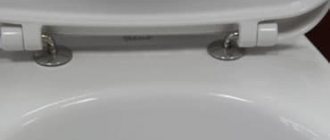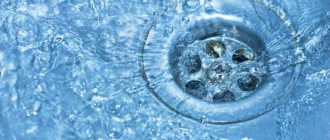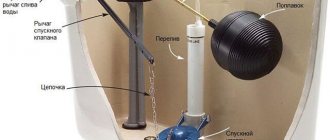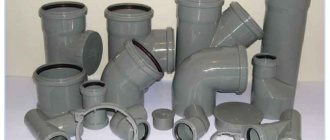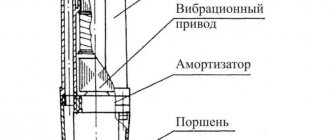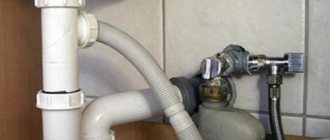What to do if the water doesn’t drain well, and you don’t want to call a plumber who will come who knows when? Of course, you will have to solve the problem yourself, and it is not an easy one. Most likely one of the pipes is clogged with debris. This could be a clump of hair or objects that should not be there at all. Stagnant water brings a lot of inconvenience to apartment owners, especially if the sink does not drain well. This often happens because we don't watch what we throw at it.
Five materials that should not be washed off
Below is a list of what is prohibited from flushing down the sink:
- Egg shells. Because due to the presence of other dirt stuck to the pipe, the shell sticks to it and layers even more debris on itself. It is also capable of scratching pipes with its pointed edges;
- Fat. It instantly sticks to the walls and is very difficult to remove. After they have washed the greasy dishes, they need to pour a few glasses of hot water into the sink. It is recommended to periodically pour a boiled kettle of water into the sink as a preventative measure a couple of times a month. Boiling water helps grease to leave the pipe walls and not accumulate on them, which prevents pipes from clogging;
- Coffee grounds. The risk of clogging the pipe with it is quite high, so it is better not to take unnecessary risks, but to pour the remaining coffee into the trash bin;
- Flour. By itself it does not pose a danger, but in contact with water there is still some danger. As the flour settles on the surface of the pipes, it mixes with water and acquires a sticky consistency. With the help of which other debris can easily be attached to the pipe;
- Paper. Some types of paper are not able to get wet quickly, which often causes poor water flow in the sink.
Poor water flow can also be caused by problems with the siphon. Perhaps yours is too narrow or curved; this means that debris cannot move along it and gets trapped in some of its parts. Debris accumulates in this area and eventually forms a plug, preventing the water from draining.
Rust may be the culprit if you have old pipes that haven't been replaced in a while. Rust accumulates and grows from year to year, thereby narrowing the lumen of the pipe.
As you can see, there are many reasons why a bathroom or sink does not drain well. We figured out the reason, but what next? After all, it’s not enough to just understand what happened; you need to start taking some action to solve the problem.
Water seal
Looking at the structure of the underwater system to the sink, you can see the following. A pipe extends down from the sink, on which the “elbow” is located. A water seal is formed in this very place. A certain amount of water accumulates there and cannot flow out into the pipe on its own. This design is designed to prevent odors from the drain pipes from escaping and filling the kitchen through the hole in the sink.
Now you should pay attention to the corrugation. The fact is that when it is positioned in a certain way, another water seal can be created. It looks roughly like the following photo.
Here you can see that the corrugation sags quite low. This prevents the water from completely pouring into the pipe. Due to the fact that two water seals are located one behind the other, an air lock is formed, which prevents water from fully passing through the drainage system. In fact, a similar problem can be detected even by sound. When the tap opens and then the water drains very slowly, you can hear gurgling sounds at the end. This will be a clear indicator that an air lock has formed.
Cleaning methods
So we got to the main thing, how to clean our pipe. There are several different methods, choose the one you like. But sometimes you have to combine them, since it is impossible to achieve the result using any one option.
Mechanical method
For this you will need a plunger. If you don’t have it, go to a hardware store or market, where you can buy it for a small amount. The plunger acts like a vacuum. Before using it, you need to fill the sink with hot water and then place the plunger in the area of the drain hole and press it firmly against it.
This will ensure the plunger is firmly attached to the drain. You will need to apply some force by pressing the plunger handle several times one after the other, this needs to be done quite intensely. After these steps, remove the plunger. If you see that the water has begun to pass, it means that you did everything correctly and everything worked out.
It often happens that the clog in the sink is quite severe and a plunger alone cannot help. In this case, you will need a cable. This is a long cord made of metal with a handle at its end. Be prepared for the fact that physical strength will be needed here; a woman most likely will not cope here. The cable must be inserted into the drain hole and slowly carefully pushed down. If you feel any obstacle under the cord, then pull it towards you a little, and then push it down again.
If the cable still does not pass after several such attempts, then this may mean that the problem has been found - the blockage is here. And then comes the time for the most difficult manipulations. The cable must be gradually pulled out by turning it in reverse movements. To quickly get rid of the blockage, you can also add hot water to the pipe. After you have completely pulled out the cord, you need to try again to enter the pipe at a longer distance; if you succeed, then the blockage is cleared.
At the end of the procedure, turn on the hot water so that it washes away all the remaining debris. Don’t forget that you need to wash the cable, do it carefully, as a large amount of smelly debris has accumulated on it.
But what to do if you have neither a cable nor a plunger? This is where a screwdriver and wrench will come to the rescue. You will just need to unscrew the nuts and take out the siphon, place it on a previously prepared surface and clean the debris that has accumulated in it. Then screw the cable back into place, while checking all joints to ensure that water does not leak out through them.
Your vacuum cleaner can come to your aid. Turn it on, place the hose against the drain hole (for a tighter fit, you can wrap the hose with film). Do not immediately turn on the vacuum cleaner at high power; it is better to gradually increase it throughout the procedure. After this, you can check whether the water is passing through.
Use of special means
Household chemicals, there are a lot of such products now, there will be plenty to choose from. Why are they so effective? They contain substances that can dissolve dirt and grease adhering to your pipes. Such products are in the form of gel pastes, various liquids and powders. When choosing a powder, keep in mind that it can also settle on the walls of the pipes and lead to additional clogging.
In order to break through a pipe using chemicals, first of all you will need to wear gloves, since all products are very aggressive and can damage your hands by burning them. You need to pour powder or gel into the drain hole and wait the amount of time indicated on the package. Then run hot water into the sink and observe the result.
Folk remedies for cleaning pipes
A popular method is to use baking soda. Mix it with water and pour it into the sink. For a stronger effect, you can also use a plunger. You can start by pouring a glass of baking soda into the drain and pouring vinegar on top. When baking soda interacts with vinegar, foam is formed, which helps clean debris from pipes.
Aspirin tablets can help. Just throw them down the drain and cover them with vinegar. Thick foam will immediately begin to form, so that it does not flow out anywhere, cover the drain with a towel. You can also use citric acid, fill the whole bag with boiling water and pour the resulting mixture into the sink.
How to clean mechanically?
Mechanical cleaning methods are often used to remove blockages . These include the use of a glass, a plunger or a special cable.
Plumbing cable
The cleaning cable is often metal. It has a handle on one side and a split, hard end for cleaning on the other.
Application:
- The working part is lowered into the drain.
- By turning the handle, the cable is moved along the drain pipe.
- After removing the cable from the drain, there may be debris at the end of the cable that is obstructing the passage of water.
- Repeat the procedure several times.
- Check the quality of cleaning by pouring water into the sink.
- If necessary, I repeat the processing.
Mechanical cleaning can be supplemented by using special chemicals or home recipes.
You can watch how to work with the cable in the following video:
Cup
For small blockages, when water passes through, but not as quickly as usual, even an ordinary glass can help.
Principle of operation:
- take some water into the sink;
- lower the glass so that it covers the drain hole;
- press and then sharply move your hand with the glass up;
- repeat several times.
Cleaning using this method is similar to the principle of using a plunger, but it will not help deal with serious blockages.
plunger
It is advisable to have a plunger in the household - a simple tool that will help deal with fresh blockages.
Procedure:
- fill the sink with some water;
- install the plunger so that the drain is completely covered with the working nozzle;
- press the plunger with force and pull it sharply towards you;
- repeat the treatment several times in a row, even if the plug has already been removed.
In addition to the usual plunger, you can use pneumatic models.
What to do to prevent the sewer from getting clogged
You already know what not to throw down the drain, but there are also some other precautions. You need a mesh screen for your sink so that debris will not be able to get into the pipe. The cause of the blockage may be poor quality water that remains on the surface of the pipes. To avoid this, you need to install a water filter at home. Clean your pipes regularly. To do this, it is not necessary to use chemistry; you can use ordinary well-known folk methods.
How to quickly remove with special chemicals?
Various preparations can be used to clean kitchen drains. They are available in liquid form, in the form of granules in sachet.
The main point when choosing is to make sure that the product is suitable for the existing type of pipes and the expected type of contamination.
Bagi Schumanit
The drug, produced in Israel, is available in granular form . It allows you to completely eliminate the blockage in just 3 minutes, dissolving food residues and fat accumulations. Suitable for all types of pipes. Contains sodium hydroxide.
For the product to work, you need to remove the water from the sink. The contents of the sachet are poured into the drain and ½ cup of hot water is poured in. After 3 minutes, the sink is washed with a large stream of water.
Advantages:
- destruction of bacteria;
- elimination of odors;
- very high efficiency;
- fast action;
- dissolution of organic and inorganic substances.
Minuses:
- high price;
- caustic composition.
The average cost of a package is 150 rubles. The product is also available in gel form. Read reviews here, here and here.
Gel Mr.Muscle
The drug in gel form is an effective remedy that acts in a few minutes. If the plug situation is stubborn, the product may need more time to clear the drain.
Advantages:
- efficiency;
- ease of use;
- elimination of bacteria.
Minuses:
- caustic composition;
- price;
- high consumption of funds;
- for advanced cases it will take several hours.
Price – 300 rubles. You will find reviews here and here.
Tire Turbo
The gel is intended for cleaning pipes at home. The product is suitable for all types of pipes. Contains chlorine. A single treatment of one drain hole requires 250 ml of product.
Advantages:
- efficiency;
- works even when there is water in the sink;
- eliminates bacteria.
Minuses:
- price;
- high consumption.
Cost – up to 400 rubles. Reviews can be found here, here and here.
If the blockage is still not detected
If after completing all the procedures you see that the water is not draining well, but there is no blockage and you cannot find it, then the problem is not in your pipes. Perhaps this is a problem with the public sewer or the neighbor's. In this case, it is best to contact the staff of the utility service that services your home. They should send a technician to deal with the general sewer system.
Currently reading
- We repair chips on the bathtub with our own hands
- Installing faucets to an acrylic bathtub - easy with your own hands
- Simple reasons for hot water meters fogging
- We create a water leakage control system using improvised means
How to remove using folk remedies?
Even simple homemade recipes can help solve the clog problem. But it is better to use them in cases where the blockage is not severe. If the water does not drain from the sink at all, it must be scooped out before cleaning.
Boiling water
This is the simplest and most accessible.
Procedure:
- It is necessary to bring at least 1.5 liters of water to a boil.
- Pour boiling water into the sink, being careful to direct the stream into the drain.
- If the water begins to go away, then after 1.5 hours the procedure must be repeated. Otherwise, you will have to try another drain cleaning option.
This method is suitable for flushing out the blockage only if the pipes are not made of plastic. Otherwise, only water with a temperature of up to 70 degrees can be poured into the sewer. Failure to comply with this requirement may result in damage to the plastic pipeline.
Vinegar and soda against fat deposits
To clear clogs caused by food debris, especially greasy food, the baking soda and vinegar method can be used.
Procedure:
remove all water from the sink;- pour ½ pack of soda into the drain hole;
- pour in ½ cup vinegar;
- plug the drain hole to ensure that the chemical reaction takes place in the pipes and not on the surface of the sink;
- wait until the chemical reaction with the formation of foam is completed;
- pour 1.5 liters of boiling water (hot water) into the sink drain hole;
- Run cold water for 3 minutes to flush out the drain.
You can use cleaning with soda and vinegar as a preventive measure.
Hangover pills
If the blockage is not severe and you don’t have soda on hand, you can use effervescent hangover tablets. Alka-Seltzer will do.
Application is simple:
- In a saucepan, mix 2-3 tablets of the drug with a glass of vinegar.
- Quickly pour the foaming solution into the drain.
- Immediately plug the hole with a rag.
- After 10 minutes, turn on the water under pressure.
Alternative use of tablets:
- Grind and pour 2 tablets into the drain.
- Pour in a glass of vinegar.
- Plug the drain hole in the sink.
- Wait a few minutes for the reaction to pass.
- Run hot water.
Salt and soda
Kitchen drain pipes are susceptible to deposits from grease that gets into the pipes when washing dishes.
Application procedure:
- combine 4 tablespoons of salt with 2 tablespoons of soda in a container;
- pour two glasses of water;
- pour into the drain;
- plug the kitchen sink drain;
- stand for 10 minutes;
- run hot water.
This method cannot deal with old blockages.
Prevention measures
Before washing dishes, it is necessary to remove all remaining food from the plates. But that's not all - there are special meshes that are installed at the entrance to the sink drain. Such a mesh will retain all particles of products that will flow away with water. A more expensive option is to purchase and install a garbage grinder. This device is installed in the sink drain; it grinds food waste, preventing it from accumulating in the water pipes.
After each time of washing dishes, it is necessary to heat a kettle of water and pour it into the sink water supply inlet. The hot water will gradually leave, washing away grease and food residues, preventing them from accumulating. Getting into the habit of pouring hot water into the water supply after washing dishes can help prevent blockages in your plumbing system for a long time.
Features of cleaning plastic pipes
Cleaning plastic pipes requires special care. Despite the strength, the material from which the drainage system is made is susceptible to mechanical damage and exposure to very high temperatures.
The inner surface of the pipes is quite smooth; with proper installation, blockages in such a system occur less frequently than in cast iron drainage systems. This is explained by the fact that plastic is not prone to corrosion and the adhesion of various substances to the surface .
But during operation, food particles that fall into the kitchen drain can be deposited, causing a blockage. The best options for cleaning approaches are the use of a plunger, the use of home and special products.
We get an additional effect
Even after you have cleaned the sewer pipes using a cable, remember that a greasy residue remains over their area. This means that you will have to clean it again in the near future. To avoid such an unpleasant situation, it is best to use products such as “Mole” and “Mr. Muscle”. Each package will contain instructions for use, and by carrying out this additional action, you can get a guarantee that the sewer pipes will remain clean longer.
How prices for services are determined
Any client is interested in how much it costs to unclog a sink, and this is natural. If you're serious about budgeting, check out our pricing in advance. To do this, you can consult a company representative or look at the price list. But remember that you will only get approximate values, since each case is individual.
Usually the technician will tell you how much it costs to clean the sink after arriving at the site. After all, he needs to familiarize himself with the scope of work. The exact figures depend on the type of sink used and the piping system. They are also influenced by the complexity of the work, which is determined by the nature of the blockage. But, in any case, we strive to offer clients affordable prices for services.
If your sink stops draining, give us a call and we can fix the blockage. In addition, our company successfully repairs, replaces, and installs plumbing equipment of varying complexity.
How to fix
Inside the bathroom
We first determine the location of the blockage. If water does not drain from the sink, but does not linger in the bathroom, the sink siphon is clogged. When there is a bad odor coming from your bathtub drain and strands hanging off the crossbar, the U-flap or corrugation is likely clogged.
If the water drains at first and then stands, it may be a riser. With a combined kitchen and toilet sewer system, proper functioning of the toilet indicates a clogged wiring inside the room.
There are three cleaning methods:
- hydraulic;
- mechanical;
- chemical.
Hydraulic “emergency” is carried out with a plunger; at the initial stage it is usually possible to break through the plug. The plunger allows you to clean the system by alternately creating a vacuum - excess pressure by a compressible rubber valve. The liquid, together with the dirt, rushes under the kvach by inertia. Hair caught on the crosspiece is removed with a crochet hook.
Close the overflow hole tightly with your palm (or a wet rag) for efficient operation of the kvacha. To prevent the rubber valve from sucking in air, immerse it halfway in water.
Plungers for sinks and toilets are sold; the latter have a tapering nozzle. Plumbers have powerful piston ones in their arsenal, however, this is not a panacea, since the joints of the plastic wiring cannot withstand excess pressure. Specialists use high-pressure units for hydrodynamic sewer cleaning:
Mechanical cleaning is combined with using a plunger. They use wire hooks, polymer brushes, and devices for winding threads. As a rule, a steel cable is used during partial disassembly, otherwise it is easy to break through the corrugation. The cargo cable and steel wire (“steel wire”) are inferior to the plumbing cable, wound in the form of a flexible shaft with a cross-section of 10–16 mm.
Adviсe:
Accessories:
The equipment listed above helps to temporarily restore patency. The issue can be radically resolved by dismantling the clogged unit. To clean the flat siphon:
- Loosen the union nut connecting the flat elbow to the neck fitting.
- Unscrew the nut connecting the adapter to the outlet or corrugated hose connected to the sewer.
- Remove the elbow along with the adapter (it is acceptable to leave the adapter).
Removing the flat elbow
- Disassemble the assembly by unscrewing the coupling nuts, clean and rinse.
- Check the permeability of the outlet and the area behind it with a wire. The folds of the corrugation trap dirt, so take it out and rinse the sleeve.
- Replace stretched conical seals. Reassemble in reverse order.
Assembling and disassembling the siphon:
Leaking joints are untwisted, dried, coated with silicone sealant, assembled, and the composition is waited for complete hardening according to the instructions on the tube.
The chemical method is more of a preventative measure. Factory-made products are effective against grease, but are powerless to dissolve scale; they will not overcome a ball of hair; the restoration of patency will be temporary.
Be sure to wear protective gloves! Follow the instructions on the bottle label regarding the dosage of the drug, exposure time, and safety precautions.
Do not rely on craftsmen’s recipes, especially those containing acids: excessive concentrations of solutions will damage gaskets, damage the coating of plumbing fixtures, and pose a health risk.
Notes on the device design
Bottle and tubular U-shaped models are designed for sinks; the former are more convenient to maintain. Bathtubs are often equipped with compact U-shaped flat ones. For cheap corrugated siphons, the shutter is installed by bending an accordion accordingly; the design is small-sized, but unreliable. A rigid connection with wiring is preferable to a flexible corrugated hose, but requires precise installation.
Pipe U-shaped.
Bottle
The bottle model does not require complete disassembly; just unscrew the settling tank. Leave a gap between the end of the vertical pipe and the bottom of the tank, otherwise deposits will quickly fill the gap. The distance is adjusted by moving the body along the pipe (for adjustable structures), fixing the position with nuts.
Don't forget to place a basin or bucket under the sink before starting work.
Unscrew the bottom.
Disconnect the sleeve.
We remove the body.
We wash it and put it back.
Sewer riser
In five-story Khrushchev buildings, inspection hatches are provided on the first and top floors; tall buildings were equipped with inspection hatches every three floors. Local cleanouts were also installed - outlets closed with plugs.
The risers of the current plastic network are equipped with revision tees with threaded covers. Similar smaller devices are installed near problem areas: walled up, hidden, sharp bends.
Briefly about the revisions:
If there is no hatch, it is advisable to disconnect the toilet corrugation to gain access to the riser tee. If there is a hard connection, you will have to remove the toilet or clean it through it.
Connecting the toilet using rigid bends.
Clean with a special cable with a handle. The tip can be equipped with hooks that hold fibers, strands, bags, and rags when pulling. It happens that they attach a pointed blank (for example, the peak of a jackhammer), break through the blockage, periodically lifting it and letting it fall freely, it is convenient to operate from the attic:
From the apartment proceed as follows:
- Remove the threaded inspection cover (flanged for cast iron).
- Lower the cable until it stops against the obstacle.
- Holding the whip with your hand, simultaneously rotate the handle.
- They impart a reciprocating motion to the wire to break through the barrier. Periodically remove and remove any trapped debris.
There is a danger of pushing the congestion lower. Then you will have to ask the residents of the lower apartment to open the audit, pushing the blockage towards them and removing the contents by hand. To prevent it from falling further, first plug the inner hole with a rag tied from the outside. Carefully monitor the movement of the spiral; it happens that repairmen pierce the plastic or run the wire towards the neighbors.
They produce mechanized cables with a set of attachments:
The worst option is a cast iron riser laid inside concrete panels. You can only get to it through repair hatches or from the attic. Wet walls of the entrance between floors indicate poor permeability of coupling joints: sewage stagnates and leaks through loosely caulked joints. For repairs, it is necessary to dismantle the brickwork covering the technical openings in the entrance.
An example from experience: “metalworkers” pulled out a drain pipe in the attic, dumping slag into the riser, and the cast-iron sewer system became tightly clogged. It was not possible to break through the jam with a cable or a load. The plumbers dismantled the masonry of the opening in the entrance, cut out a pipe segment with a grinder, and removed a bucket of slag. The hole was closed with a rolled sheet, welded with an electrode using cast iron.
External reasons
The sewage system in the basement or manhole usually becomes clogged due to the fault of careless residents who wash away unusable preserves, rags, bags, and construction waste. The latter can indirectly point to the culprit of the emergency.
The approximate location of the blockage is sometimes visible from the joints leaking under high pressure. Don’t try to do something yourself, call the management company. A clogged well is filled with sewage flowing out, and it’s time to call an emergency.
The water in the kitchen sink does not drain
A lovingly made renovation in the kitchen, carefully selected interior decor elements, beautiful dishes - in the morning you usually don’t want to leave your cozy nest. So you went out into the kitchen in the morning, prepared to make yourself a cup of coffee and some... What is that unpleasant smell coming from the sink? Let's let the water through - that's right, the water doesn't go away! Instead of morning bliss, we have a clog in the kitchen sink, what should we do, call a plumber or try to deal with it ourselves? The answers are in our article.
First, let us reassure you that most blockages can be eliminated on your own , without calling specialists. There are several methods; if in your case one of the selected options does not turn out to be effective enough, you can use another. Also, at the end of our article, we’ll talk about preventing clogs in the kitchen sink.
Who is to blame and what to do?
Two eternal Russian philosophical questions are quite applicable to our situation. First , check whether there is a special mesh on the sink drain that does not allow food debris, large fractions of vegetable peels, hair and pet hair to freely penetrate into the sewer pipe and form such a delicious plug there, mixing with fat.
If there is no mesh , only you are to blame, how to remove the blockage - urgently go to the hardware store for a miracle mesh.
But there may well be a situation where the fat washed off from the dishes remains on the walls of the sewerage elements and catches the smallest food debris and so on. A clog forms, just not so quickly, not once a week, but once a year , and then one day, not a wonderful day, the water stands in the sink, and the plastic mesh, on which so much hope is placed, drifts on the surface of the water.
What should I do? Let's roll up our sleeves and get down to business.
But the owners are not always to blame; let’s list all the causes of blockages:
- the fine litter already mentioned above (food remains, fat, threads, hair);
- corrosion of pipes (typical of old housing stock);
- defects in the operation of the sewer system (improper installation of the siphon, depressurization of the pipeline, etc.).
In our article we will analyze options for action for the first, most common reason. If old pipes are corroded, they become brittle - in this case, they should be replaced with more modern building materials (in a plastic pipe, for example, there will be no such deposits).
